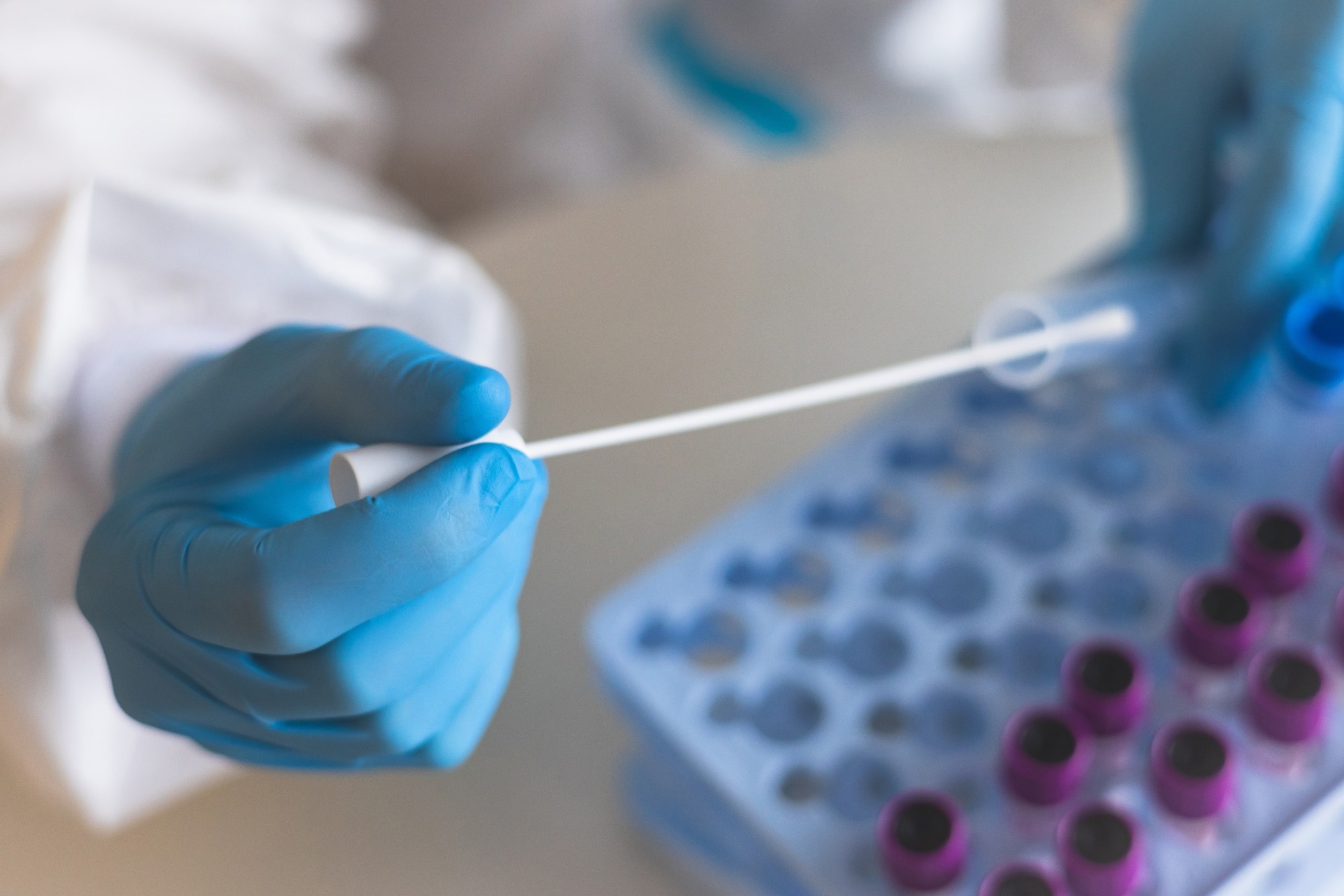In a recent study published in the Communications Biology Journal, researchers described a novel strategy for controlling severe acute respiratory syndrome coronavirus 2 (SARS-CoV-2) infections where a bispecific T-cell engager is used to target the SARS-CoV-2 spike protein.
 Study: A spike-targeting bispecific T cell engager strategy provides dual layer protection against SARS-CoV-2 infection in vivo. Image Credit: Tsuguliev/Shutterstock.com
Study: A spike-targeting bispecific T cell engager strategy provides dual layer protection against SARS-CoV-2 infection in vivo. Image Credit: Tsuguliev/Shutterstock.com
Background
Although the rapid development of vaccines and monoclonal antibodies successfully limited the severity and mortality during the coronavirus disease 2019 (COVID-19) pandemic, the emergence of novel variants with immune evasive mutations continues to raise concerns periodically.
Antiviral technology consisting of small molecules that target the viral entry and replication of SARS-CoV-2 is being explored, and some of these, such as Paxlovid, have been approved for clinical usage. Neutralizing antibodies were also quite successful against SARS-CoV-2 during early clinical use.
Many of these antibody therapies target the angiotensin-converting enzyme-2 (ACE-2) receptor, the primary receptor for SARS-CoV-2 entry.
However, novel spike protein mutations continue to challenge the efficacy of neutralizing antibodies, and novel approaches, in addition to existing small molecule inhibitors and neutralizing antibodies, are required to combat the emerging SARS-CoV-2 variants.
Bispecific antibodies that target two epitopes and bispecific fusion proteins with a soluble ACE-2 arm and an antibody arm have also been developed to improve neutralization efficacy while simultaneously targeting the evasive immune mutations.
About the study
The researchers developed a bispecific T-cell engager (S-BiTE) that targets the SARS-CoV-2 spike protein in the present study.
This fusion protein comprises an extracellular ACE-2 domain for blocking viral entry and an anti-CD3ε (cluster of differentiation 3ε) single-chain variable fragment (scFv) to eliminate the virus-producing cells by activating T cells.
The ACE-2 extracellular ligand was used to identify cells expressing the SARS-CoV-2 spike protein, similar to in vivo SARS-CoV-2 infected cells. The monovalent extracellular domain of ACE-2 exhibits high affinity for the SARS-CoV-2 spike-Fc fusion protein receptor binding domain (RBD).
Compared to the bivalent parental anti-CD3 antibody, the monovalent anti-CD3ε scFv has a reduced affinity for CD3ε, which ensures that the T cells will not bind and get activated if the SARS-CoV-2 spike protein is absent.
T-cell activation assay using co-cultured cells expressing the SARS-CoV-2 spike protein was conducted in vitro to test the T-cell activation ability of S-BiTE. The cytotoxicity of S-BiTE was also compared against that of the ACE-2-human immunoglobulin g (IgG1) Fc fusion proteins.
Furthermore, a pseudotyped SARS-CoV-2 production system was used to test the efficacy of S-BiTE in preventing viral release. The cytotoxicity of S-BiTE was also tested in vivo.
Additionally, the safety profile of S-BiTE was tested using mice models to ensure that it did not cause any unwanted depletion or activation of T cells.
Mesenchymal stem cells were engineered to express S-BiTE stably, and the preferential bio-distribution of mesenchymal stem cells in the lungs also indicated its potential use in treating pneumonia induced by SARS-CoV-2.
The efficacy of S-BiTE in eliminating cells expressing the spike protein was further tested using live virus-infected cells and against the spike protein of the Delta variant.
Results
The results reported that S-BiTE competed with membrane receptors and blocked the entry of free SARS-CoV-2 into permissive cells while activating strong T-cell mediated cytotoxicity to eliminate virus-infected cells.
Furthermore, S-BiTE was equally effective against both the original SARS-CoV-2 strain and the Delta variant, indicating its potential efficacy and use against emergent immune evasive SARS-CoV-2 variants.
The treatment of a humanized mouse model with SARS-CoV-2 infection using S-BiTE significantly reduced the viral load more effectively than neutralizing antibodies alone.
The use of humanized mice models to test the safety profile also reported no significant difference in the subtypes of immune cells, unwanted depletion or activation of T cells, or any infiltration of major tissues with immune cells.
The first of the two significant advantages of using S-BiTE over the standard neutralizing antibody therapies are using ACE-2 as the targeting moiety, which will be effective against almost all SARS-CoV-2 variants.
The second advantage comes from using anti-CD3ε to activate the T-cells to eliminate the virus-infected cells, which is significantly more effective than antibody-mediated cytotoxicity.
Conclusions
Overall, the findings reported that S-BiTE prevented viral entry by competing with ACE-2 membrane receptors and activating T-cell cytotoxicity, effectively clearing the SARS-CoV-2 infected cells.
The S-BiTE technology can be further optimized by selecting target moieties and improving the safety and neutralization capabilities to improve efficacy against emergent SARS-CoV-2 variants.